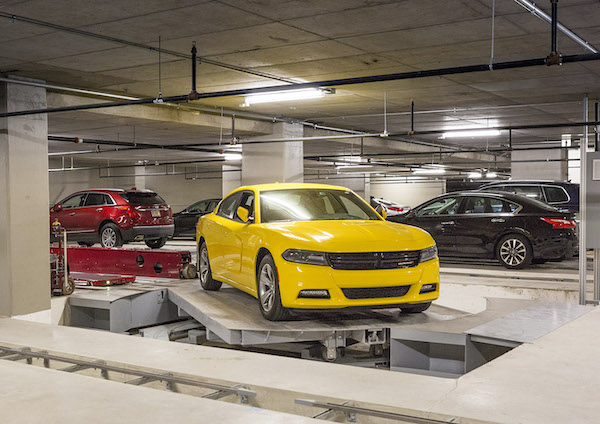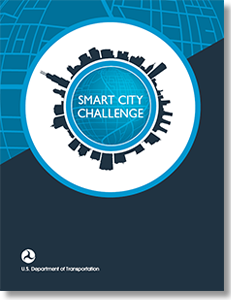Robotic Parking a Key Element of the Smart City of the Future, Says Westfalia
Robotic parking systems, said that smart city infrastructure has now evolved enough to help entire communities.
Although Europe leads in terms of smart city development and infrastructure, North American cities are beginning to turn toward the Internet of Things and connected infrastructure. Just as the smart home has evolved over the past decade to the point that Alexa can control just about any device at any time, so has interconnectivity spilled outdoors into entire communities. Robotic parking systems can be a key portion of well-designed smart city infrastructure.
Smart city technology could improve the quality of life in many areas, such as crime, health, and commuting challenges by 10% to 30%, according to Forbes. In particular, systems focused on public safety and traffic can take advantage of such infrastructure.
Robotic parking systems (RPS) can connect and share data with any other Internet of Things (IoT) systems, such as payment kiosks.
Charge more vehicles with less infrastructure
While robotic parking systems are not new, they are gaining interest thanks to innovations like electric vehicle (EV) charging capabilities and sustainability policies. Thanks to consumer expectations and government initiatives, the future of transportation is non-reliant on fossil fuels.
With conventional methods of EV charging, a charger is occupied until a driver physically removes that plug from the vehicle. The charger is then only accessible for another EV if the first vehicle has moved.
However, with the right robotic parking design, many more EVs can be charged with a single charger due to the robot's ability to move EVs to and from charging positions within the RPS. If an RPS is integrated with an automated EV charging system that can automatically disconnect and reconnect to a number of EVs, this further increases the charging efficiency.
All smart cities have environmental sustainability near the top of their priorities list. Thanks to their compact design, RPSes can not only park twice as many vehicles in the same volume as conventional garages, but they can also save on valuable urban green space and general land use.
In addition, robotic parking systems can decrease emissions by roughly 80%, thanks to the elimination of cruising for spots and no need for internal lights. Given that 75% of the world's emissions come from urban areas, RPSes could contribute to the green development of smart cities.
Robotic parking systems robust and reliable
From manufacturing the hardware to designing the software, the right automated parking supplier will produce all elements of the system in-house. Not only should an RPS be able to integrate with any other IoT infrastructure, but the best vendors should also boast availability ratings of over 99%.
Available in both pallet and palletless designs, RPSes can be customized to retrofit existing structures. They can be more efficient when installed in greenfield projects.
Properly designed parking automation can be installed for private, public, and mixed use.
User-friendly design
Upon arrival, a driver enters the transfer area of the robotic parking system and is guided into the correct position via a visual display. The driver then gathers his or her belongings, exits the transfer area, and answers a few prompts on the kiosk. Then the robots take over.
The car is typically transported vertically and horizontally to a vacant parking space. When drivers are ready to retrieve their vehicles, they can see a real-time countdown on their smartphones of when their cars are in the transfer area and ready to drive away.
A well-performing RPS should be able to retrieve vehicles in two to three minutes, as well as process a new car every two to three minutes thereafter.
Robotic parking systems can be a vital component of smart cities. Although municipalities are attempting to ramp up public transportation efforts and increase the use of autonomous vehicles, this doesn't equate to the end of private vehicle ownership.
With a variety of technologies installed into smart city networks, ranging from garbage pickup to street lights, RPSs are logical to include in intelligent infrastructure.

About the author
Ian Todd is executive vice president of automated parking systems at Westfalia Technologies. He has more than 20 years of sales, marketing, product development, project management and business development experience.
Todd holds a MS in engineering project management, along with a BE in naval architecture and small craft engineering. From Europe to the U.S., working with architects and developers has given him the knowledge and skills to deliver reliable results and exceed customer expectations.
Todd's main focus at Westfalia includes assisting developers and architects with effectively solving parking problems, and implementing the various advantages of robotic parking systems.
Article Topics
Westfalia Technologies News & Resources
Warehouse automation extends life of cheese DC by a decade Southern Glazer’s Wine & Spirits selects Westfalia Technologies for automated storage Doubling up on cold-storage automated storage and retrieval systems AS/RS gains Taking stock of food and beverage Automated storage gets a makeover Automating fulfillment of America’s favorite rolls Justifying the Cost of Your Automation Project More Westfalia TechnologiesLatest in Supply Chain
Why Companies are Pushing for a Quieter Warehouse Union Pacific’s Speedy New Service Connects Southern California and Chicago Talking Supply Chain: Achieving cost savings through better procurement Mexico Continues As America’s Top Trade Partner in March Williams-Sonoma Hit with Record Fine For Misleading Customers How E-Commerce Deliveries Are Failing Today’s Consumer Study Uncovers Massive Pollution From Ship Scrubber Discharge More Supply Chain











